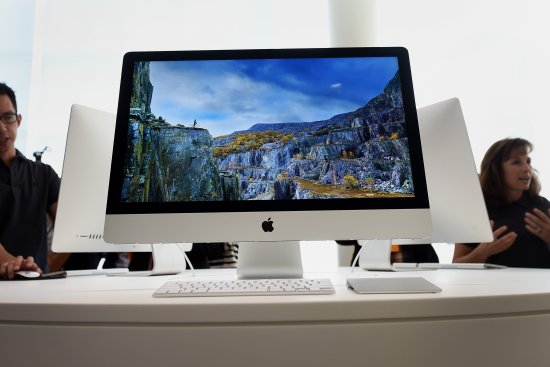
A periodic polish will keep everything from keys to apps running smoothly
From deadlines to the daily grind, there’s never a good time to drop everything and clean your workspace. But if you keep the term “spring cleaning” in mind, at least there’s one good reminder to schedule that downtime.
But don’t stop at sifting through your inbox or pulling old Post-It notes off your wall. Get down and dirty with your computer, wiping it clean from the screen to the system files, to make sure everything runs smooth the rest of the year. Don’t be daunted. Follow these seven steps to get your entire computer squeaky clean.
1. Clean Your Keyboard: If you realized your computer had a virus, you’d likely drop everything and start patching your software immediately. Guess what — your system probably has dozens of nasty bugs, and that’s just on the surface. Using tracer viruses, Charles Gerba, professor of microbiology and environmental sciences at University of Arizona, Tucson, has studied the spread of contaminants through office buildings, hotels, and healthcare facilities, proving bugs can spread from the front door to your space bar in just two hours.
Thankfully, common disinfectants were between 80 and 99% effective at stopping them — so get wiping. And don’t forget to disinfect your mouse, too.
2. Scrub Your Screen: Most of the time you spend staring at your computer’s screen it’s on, so you can’t see all the dirt and grime caked onto the glass. But power that display down, and a petri dish will materialize before your eyes. Touchscreen PCs will be worse than Macs, but everyone who uses a laptop gets a gunky buildup where your keys meet the glass when the computer is closed.
To see clearly again, all you need is a microfiber cloth and some simple cleaning solution, says PC World. Make sure your display is powered off (if it’s your laptop, power the whole machine down), and try wiping with the dry cloth first. If that’s not enough, spritz some cleaner onto the wipe, and give it a gentle polishing. And then when you’re done, hit your touchpad, too — that thing is nasty.
3. Sort Your Desktop: If you’re anything like me, when your desk is a mess, your life follows suit. Likewise, there’s a psychological effect to keeping a disorganized gaggle of files on your computer’s desktop. But if you’re one of those people who claims to know where everything is even when your hard drive looks like an episode of Hoarders, consider this argument for keeping your computer’s desktop folder clean. According to the author (and several commenters), Macs slow down when users keep too many files on the desktop, because OS X automatically catalogs previews of files located there for quick viewing. So either organize your files now, or get slowed down by them later.
4. Delete The Duplicates: Copies, copies of copies, and copied copies of copies are squeezing you out of your computer. If you don’t believe me, consider what happens when you email a PowerPoint presentation back and forth between yourself and a co-worker. First you create the slides on your computer (file #1, in your Documents folder), then you send it to your colleague via email (file #2, in your sent email), and then she sends it back to you (file #3, in your inbox). Hunt down and eliminate these redundancies to make sure your hard drive doesn’t run out of space before it’s too late.
[time-brightcove not-tgx=”true”]5. Backup Your Files: When was the last time you backed your files up? If it was this time last year, you’re already at risk of losing sensitive data. (And if you can’t answer that question, you’re really in trouble.) Don’t just make a copy of your files, make three. First, make a daily, system-wide backup using Time Machine on Apple computers or File History on Windows PCs. Secondly, set up a cloud backup so you can access your digital valuables in case your daily backup fails. And finally, make an off-site, offline backup using an external drive that’s stored somewhere else, off property. This last one is your in-case-of-earthquake backup. Hopefully you’ll never need any of these copies (especially the last one), but you’ll only find out how valuable they are when you do.
6. Install Your Updates: Many computer users think since their systems work well, there’s no sense in messing them up by installing unnecessary updates. But that’s flawed logic, because it doesn’t take into account all the external forces, from viruses to wear and tear, that will cause your computer to break down. Staying current on updates will not only keep your computer running well today, it will fend off unforeseen problems tomorrow. So, take this spring cleaning opportunity to update your operating system as well as all your software — and to delete old programs that you’re no longer using.
7. Run Your Utilities: Put a coat of polish on your freshly cleaned computer by running the system utilities designed to make it run more efficiently. On Windows, pressing the Disk Cleanup button in your hard drive’s properties window (“general” tab) makes it easy to find and delete stray bits like temporary Internet files and other long-forgotten downloads. Then on the “tools” tab, error checking and defragmenting features keep your disk spinning as good as new. On Macs, the Disk Utility app in the Utilities program will scour your drive looking for and repairing broken permissions. Experts recommend you run that program monthly, but if you start doing it every spring, you’ll be a step ahead of almost everyone else.